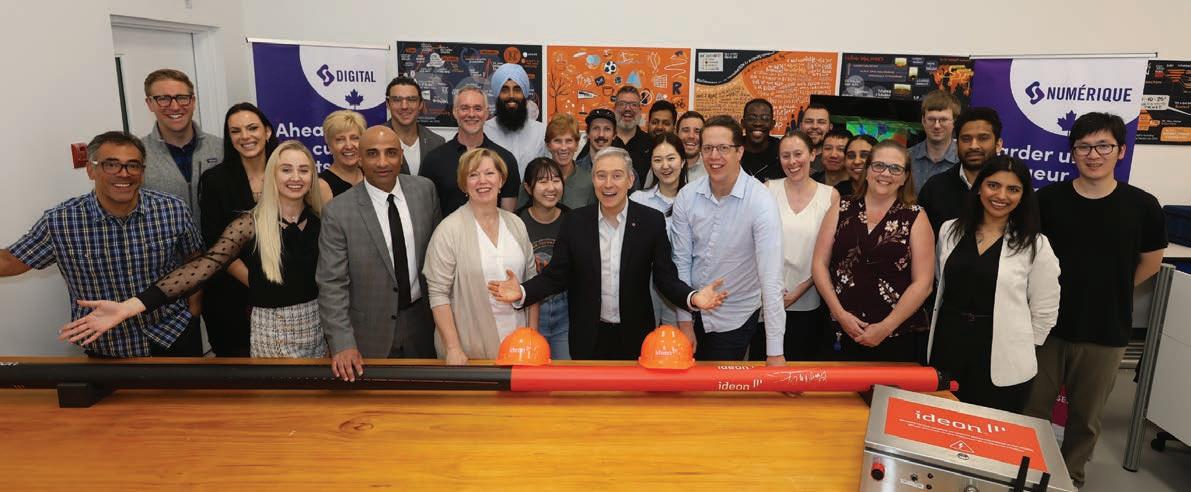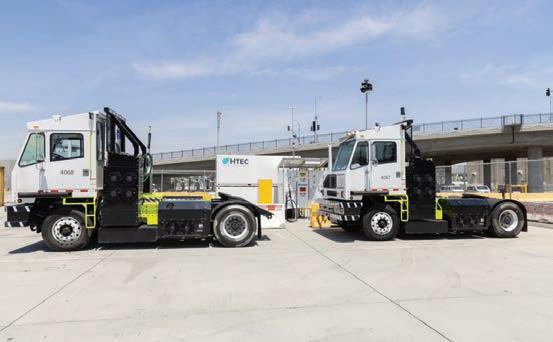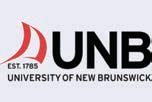


















and Critical Mineral Strategy
How can clean energy assist Canada in accomplishing its critical mineral strategy, and in what ways will it strengthen Canada’s supply chain?
We are proud that nearly 83 per cent of electricity produced in Canada comes from low- or non-emission sources, and we have committed to an ambitious plan to reduce emissions by 40 per cent by 2030 as outlined in the Emissions Reduction Plan. We are committed to achieving a net-zero electricity system by 2035, and have charted an ambitious path to achieve net-zero emissions by 2050. To achieve these goals, in part, the federal government is investing in clean energy production and technologies through programs such as the Smart Renewables and Electrification Pathways Program, which provides up to $1.564 billion over eight years for renewable energy and electrical grid modernization projects.
In order to secure and create jobs, to grow the industries, and to lead the world with the resources and technologies it will need for generations to come, I launched the Regional Energy and Resources Tables in June 2022. The Regional Tables are part of a collaborative initiative with the provinces and territories designed to identify, prioritize and pursue opportunities for job creation, economic growth for a low-carbon future, and investment in renewable energy technology and infrastructure. To date, the tables for British Columbia, Manitoba, and Newfoundland and Labrador were set up during Phase 1 of the rollout. New Brunswick, Nova Scotia, Prince Edward Island, the Northwest Territories, and the Yukon were set up with Phase 2, and Ontario with Phase 3. We look forward to working with all jurisdictions in the future.






Collaboration is often a catalyst for innovation. How do you plan to encourage partnerships between industry, academia, and government to create a thriving ecosystem that fosters innovative ideas and solutions?
Our country is home to world-class researchers who generate groundbreaking technologies and innovations, and their work in collaboration with industry partners delivers solutions to the world’s most pressing problems.
For example, our government is helping to connect the best and brightest talent with innovative businesses by providing funding to organizations such as Mitacs and by investing in the College and Community Innovation program.
As knowledge and talent are key competitive advantage in driving Canadian innovation, we’re committed to working with post-secondary institutions and businesses to help cement Canada’s position as a world leader in research and innovation.
In your opinion, what are the key factors that have contributed to Canada's success as an innovative nation?
And how do you plan to build upon these strengths to further enhance Canadian innovation?
We have everything we need to thrive: our workforce is one of the most educated in the world, we have world-class research institutions and abundant sources of clean energy, we’re the only country in the world with free-trade access to the entire G7 and European Union, we have strong and thriving ecosystems, and we have access to critical minerals, which are in high demand these days.
As a strong, stable, and reliable trading nation, Canada’s prosperity depends on the exchange of ideas and goods, and on building a skilled workforce. That’s why we’re committed to expanding our trade ties, unlocking investment opportunities, and doing everything possible to remain a top destination for businesses.


The global shift from fossil fuels to clean energy is driving innovation in one of society’s oldest industries, which is also one of Canada’s most significant economic sectors: mining. Critical minerals and metals (such as nickel, copper, cobalt, and lithium) are in high demand to facilitate the clean energy transition, with massive pressure on the mining industry to find billions of tons of resources over the coming decades to deploy technologies such as wind, solar, nuclear, and electrification.
By enabling more efficient, responsible, and low-impact mining, one Canadian company is enabling a smoother transition.
Adopting creative new approaches
In Canada alone, all new car sales will be electric by 2035, with the average electric vehicle requiring more than 150 kilograms of critical minerals to produce. The Canadian government recently released a national critical minerals strategy to address supply chain shortages and bolster

mining as one of Canada’s most important economic sectors.
The fact is that there can be no clean energy transition without mining. For an industry so critical to our livelihoods, there’s no shortage of public critique, with perception rooted in historic practices. Mining companies currently rely heavily on drilling to try and understand the subsurface, using a hit-and-miss approach targeting poorly constrained geological anomalies. They often make billion-dollar decisions based on a small fraction of knowledge of what’s beneath the surface.
With global drilling volume at approximately 150 million metres per year, a fundamental shift in approach is required to realize substantial improvement in the sustainable production of critical mineral resources. The world’s largest mining companies are adopting creative new ways to access the Earth’s resources more efficiently, responsibly, and with as little impact on the environment and our communities as possible.
Unlocking subsurface potential
Vancouver-based Ideon Technologies is at the forefront of this innovation, working with the world’s mining leaders to identify, map, and monitor mineral deposits in a more precise, less invasive way, and with a higher
level of confidence than ever before.
Recently recognized with a Governor General’s Innovation Award, Ideon uses advanced particle physics to unlock subsurface potential by allowing mining companies to see clearly underground — in the same way that medical professionals use X-rays to view inside the human body. The Ideon subsurface intelligence platform harnesses the power of naturally occurring cosmic rays from supernova explosions in space, detecting, measuring, and analyzing subatomic particles to provide visibility down to one kilometre beneath the Earth’s surface.
Ideon is using this made-in-B.C. innovation to accelerate the world’s transition to low-impact mining. By enabling mining companies to see the unseen, Ideon delivers a high degree of subsurface certainty in an environment that has traditionally been very uncertain. This approach — now deployed around the world with leading mining innovators — helps companies confidently target high-recovery, low-waste deposits, and advance the sustainable supply chains needed to fuel the energy transition.




Canada’s innovation and tech sectors have experienced remarkable growth in the past two decades.
More than twelve per cent of the country’s GDP is generated by the tech industry, which is growing three times faster than traditional sectors. Canada is poised to be a global hub for technological innovation and advancement, armed with a highly skilled workforce, world-class educational institutions and an environment that fosters creativity and collaboration.
Research shows that diversity and inclusivity helps increase creativity, innovation and productivity. As one of the most multicultural nations in the world, Canada boasts a diverse talent pool to tap into. However, representation continues to be an issue, especially at the C-Suite level. Black and Indigenous groups are underrepresented, making up less than seven per cent of leadership roles across the country.
While businesses have been doubling down on diversity efforts in recent years, many focus solely on numbers such as hiring targets, without doing anything on the inclusion side.
Companies in the top quartile for racial and ethnic diversity are 35 percent more likely to have financial returns above their respective national industry medians.
McKinsey Report "Why Diversity Matters"

Mustafa Abdulali is a fourth-year business management student at the Ted Rogers School of Management. He’s also a Sales Enablement Intern at Appen, a role he secured after meeting Appen’s Chief Product Officer at the Empower to Employ: Activate Youth Summit. Launched by CILAR, MLSE and MyStartr in March 2023, the Empower to Employ Summit aims to create pathways for youth ages 18 to 29 who face barriers to employment in tech and innovation — focusing on Black, Indigenous, and youth of colour.
Mediaplanet: What did you find most valuable at the Summit?
Abdulali: As a business management student, we attend a lot of networking events. The Empower to Employ Summit is by far the most valuable for building connections. It felt like the speakers CILAR brought in were really there to help us.
MP: What stood out for you?
A: Youth from diverse backgrounds — like myself — don’t often get the opportunity to pick the brains of C-Suite leaders. It was wonderful to see the diversity in the room. Diverse talent that is sometimes overlooked is given an equal opportunity in forums like this.

“Representation has always been an important issue in tech. However, inclusion in the tech industry has never been more critical than now. Through our relationship with CILAR, we were able to identify and hire a number of incredibly smart and deserving interns who we may not have otherwise been connected with,” says Sujatha Sagiraju, Chief Product Officer, Appen.
“CILAR is directly unlocking the potential for Canada to play a critical role in the responsible evolution of AI through their diversity and inclusion programs.”
“When you have diversity without inclusion, you have employees that don't feel a sense of belonging and that ultimately can't excel in the workplace,” says Serena Nguyen, Executive Director for The Coalition of Innovation Leaders Against Racism (CILAR). “Our goal is to get underrepresented employees through the door and get them a seat at the table.”
CILAR is made up of Canada’s top innovation leaders, focusing on breaking down systemic barriers, and increasing access for BIPOC people in the innovation industry, for an inclusive future.
The organization recently launched its ACCELERATE Mentorship program, which creates reciprocal mentoring relationships between executives in the innovation economy, and Black and Indigenous leaders. The fi rst cohort kicks-offi s this summer, and CILAR is recruiting for executives and Black and Indigenous leaders for its next cohort.
Mentorship is a proven way to increase minority representation at the management level. Formal mentoring programs have increased the representation of minorities from 9 per cent up to 24 per cent in senior
With Black and Indigenous people underrepresented in C-suite levels, mentoring programs have proven to increase minority representation at the management level from 9 per cent to 24 per cent
leadership roles.
“Reciprocal mentorship provides access, opportunity, and social capital to help leaders accelerate their transition to more senior roles,” explains Nguyen. “But it also allows executives to better understand the lived experiences of Black and Indigenous leaders, and deepen their understanding of diversity and inclusion for organizational success.”
With ACCELERATE Mentorship, CILAR has adapted key learnings from its youth development programs, and applied the key insights to align to mid- and senior-managers to help organizations diversify their succession pipelines.
“Engaging individuals with unique experiences, social capital and perspectives in two-way learning accelerates personal and professional growth, increases understanding, and ultimately transforms culture,” Nguyen adds.
“Affecting systems change starts with moving hearts and minds. And the best way to move hearts and minds is through mentorship.”

35 per cent of BIPOC workers said they’ve been discriminated against and were twice as likely to experience high levels of stress compared to those who didn’t face discrimination. A Benefits Canada 2022 Healthcare Survey
There is always so much to be learned when you connect and collaborate with people who bring new and different perspectives to the table, especially as a marketer. The Accelerate Mentorship program allows me to share my leadership journey and learn from the leadership journey of others, and will help me to be a better ally to the Black and Indigenous communities in my work and personal life. We all need to contribute to providing greater support and opportunities for Black and Indigenous leaders so that we can build for today and for the future.


Taking part in the previous Youth Mentorship Program has been an enriching and impactful step on my own personal journey of growth. I'm grateful to CILAR for providing this new opportunity through the Accelerate Mentorship program to focus on leadership where me and many other leaders can apply new knowledge to create inclusive teams.


Organizations of all sizes benefit from partnering with George Brown College and gaining access to its experts, facilities, and enthusiastic learners.

Shawne McKeown













Holmes Associate Vice-President of Research & Innovation, George Brown College



As it’s one of Canada’s top 10 research colleges, organizations of all sizes want to work with George Brown College (GBC), from startups to established leaders in their sector.


As a leading polytechnic institution, the college brings a unique combination of business acumen, manufacturing knowhow, and deep connections to local industry and community.

Reducing plastic waste through innovative manufacturing design

Plastic waste presents a massive challenge. It’s everywhere — on the side of the road, in waterways, and on shorelines, and microplastics have even been found in our bodies.


Canadians throw about three million tonnes of plastic away every year, and less than 10 per cent of it is recycled.





That’s where GBC Research and Innovation comes in. We worked with Toronto startup Plastic Flux to tackle the plastic waste problem from a hyper-local angle. Plastic Flux co-founders Hanson Wong and Mohesan Sreekuladevan aimed to turn unrecyclable black plastics into useful household goods, like furniture and other items. The City of Toronto doesn’t accept black plastics in its blue bin recycling program because optical sorting technology doesn’t recognize it. Wong and Sreekuladevan worked with the GBC Research and Innovation’s Advanced Manufacturing and Prototyping lab to develop a custom machine — a sheet press for shredded black plastic — to transform this trash into treasure.











“Located in downtown Toronto, the Advanced Manufacturing and Prototyping lab offers end-to-end product development services, including early-stage support, prototype design, and assessment services,” says GBC’s Associate Vice-President of Research and Innovation Krista Holmes. “If you have an idea, we can help make it a




reality. The Plastic Flux project and other product development work with partners in the advanced prototyping, food and beverage, and textile and apparel industries demonstrate the positive impact GBC can have on your organization.”
Powering new solutions
GBC’s Food Innovation and Research Studio (FIRSt) works with small- and medium-sized businesses in the Toronto area to develop, improve, and scale up production — taking tasty product ideas and helping businesses get them onto store shelves.
This spring, FIRSt received $1.75 million of Technology Access Centres funding over five years from the Natural Sciences and Engineering Research Council of Canada. These funds allow FIRSt, currently in its twelfth year of operation, to expand its research and development efforts and serve even more clients.
Contributing to a sustainable fashion industry
GBC Research and Innovation continues to contribute to the growth of a more sustainable textile and garment industry at the Textile and Garment labs and our Fashion Exchange. We recently partnered with Canadian fashion retailer Joe Fresh to tackle textile waste, a significant source of landfill waste, during a two-year research project. GBC researchers studied cellulosic fibre regeneration — dissolving and regenerating cellulosic textile waste and
transforming it into new fibre — to close the loop in the circular economy of clothing and other items that may otherwise be discarded.
And at our Fashion Exchange, we help small businesses and up-and-coming designers with sustainable manufacturing (sample services and small production runs), testing, and other services.
“The textile, apparel design, and manufacturing industries face steep challenges when it comes to reducing waste and incorporating more ethical and sustainable practices. GBC is proud to be a part of the solution by providing support services and real-world learning opportunities for the next generation of sustainable leaders in this sector,” says Holmes.
GBC is proud to be a part of the solution by providing support services and realworld learning opportunities for the next generation of sustainable leaders in this sector.
Developing technologies for vulnerable populations Research and Innovation continues to work with long-time partner Quantum Robotic Systems (QRS), an Ontario tech company, to develop service robots for vulnerable populations. The GBC team helped QRS develop its stair-climbing domestic service robot, ROSA, which will be an assistive device for seniors, disabled persons, and caregivers.
Product development is one facet of the wide range of research and innovation activities involving GBC students, expert researchers, and industry and community partners.





















The B.C. Centre for Innovation and Clean Energy is scaling B.C.’s clean energy solutions by funding innovation and fostering collaboration.
Tania Amardeil

Executive Director, CICE
The B.C. Centre for Innovation and Clean Energy (CICE) is working toward achieving net-negative emissions in B.C. and beyond by providing non-dilutive funding to the province’s most promising clean energy innovation companies — in the most efficient and effective way possible.
“CICE is an independent, not-for-profit corporation that helps fund the development, commercialization, and scaling of made-in-B.C. clean energy technologies and solutions — from Canada to the world,” says Ged McLean, CICE’s Executive Director. “We unite B.C. innovators, leading corporations, government, academia, investors, communities, and Indigenous rights holders around
one primary focus: advancing the world toward a net-zero carbon future.”
Fast-tracking clean energy innovation
Founded in 2021 with $105 million raised through member-based partnership commitments from the Government of British Columbia, Shell Canada Ltd., and the Government of Canada (through Natural Resources Canada’s Energy Innovation Program), CICE works to support cleantech and sustainability companies in growing and scaling their innovative solutions, which cover four key focus areas — battery technology and energy storage, carbon management, low-carbon bio and synthetic fuels, and low-carbon hydrogen — in a range of industries, includ-
ing mining, forestry, marine, oil and gas, aviation, agriculture, transportation, and industrial manufacturing.
“CICE is uniquely positioned at the intersection of breakthrough and commercialization to help ideas become actions,” says McLean. “We’re focused on enabling the implementation of long-reaching climate solution technologies that have the potential to reduce the impacts of climate change while building a strong commercial sector for a decarbonized future. Since its inception, CICE has already funded over 20 B.C.-based companies, and we’re just getting started.”

ADVANCING clean energy innovation like the planet depends on it. Because it does.



Battery technology and energy storage
CICE is powering toward emissions-free electrification with its efforts to shape B.C.’s emerging battery and energy storage sector. One of the battery-focused companies that it’s funding and helping to scale is Moment Energy Inc.
“Moment provides a clean, affordable, and reliable battery storage system by repurposing retired electric vehicle (EV) batteries,” says Chris Benson, Vice-President of Projects and Partnerships at Moment Energy. “More than a funding arm, CICE has facilitated and propelled Moment to develop products widely applicable to many different business streams. With CICE’s support, we know that a large number of 2030’s expected 30 million retired EV batteries can be repurposed into battery storage solutions, providing additional energy for those that require our solutions.”

Carbon management
Scaling B.C.’s carbon avoidance, capture, and removal solutions is another focus for CICE. One pioneering company in this space is Cascadia Seaweed Corp., a company that cultivates and processes seaweed to provide low-carbon solutions for agriculture.
“Cascadia Seaweed is a vertically integrated agtech company dedicated to addressing climate change and food security,” says Bill Collins, Cascadia’s Chair and Co-Founder. “We cultivate local species of seaweed on low-impact ocean farms in partnership with coastal First Nations. We then harvest that seaweed and manufacture biostimulants and agrifeed supplements for land-based farmers that reduce emissions and increase yields.”
Thanks to CICE’s support, Cascadia has expanded its operations and built a bioprocessing facility in Northern B.C.

Low-carbon bio and synthetic fuels
CICE supports companies developing and scaling low-carbon fuels to achieve net-zero targets, including Takachar, which is on a mission to fight climate change by transforming massive amounts of waste biomass into marketable products.
“We’re developing small-scale, low-cost, and portable systems to deploy to rural, hard-to-access communities that will locally upgrade and densify crop and forest residues on-site into higher-value bioproducts such as fertilizer blends, biofuels, and chemicals,” explains Kevin Kung, Takachar’s Chief Technology Officer. “The goal is to create a profitable network of rural communities that are self-sufficient in their production and consumption of key chemicals without reliance on expensive, carbon-intensive imports, thereby advancing climate justice.”

Low-carbon hydrogen CICE works to enable hard-to-decarbonize industries to reach netzero and beyond. CICE funding for low-carbon hydrogen projects includes its support of HTEC, a company developing, integrating, and operating clean hydrogen energy solutions in strategic North American markets to enable the transportation sector’s transition to a low-carbon future.
“HTEC is planning and building multiple clean hydrogen production facilities across Canada,” says Shannon Halliday, HTEC’s Vice-President of Sales and Marketing. “These facilities will supply HTEC’s growing network of hydrogen fueling stations, which will target both light- and heavy-duty transport. Additionally, the company facilitates the transition of medium- and heavy-duty fleets to zero-emission vehicles in Canada and the U.S.”
By building companies, ecosystems, and talent, adMare BioInnovations is helping to translate Canada’s scientific innovations into a sustainable life sciences industry.
Anne Papmehl
Translating medical innovations from academic research into commercially viable companies of scale is no easy feat. “The challenge is to identify what the commercial opportunity is and how to connect compelling academic research at an early stage to that opportunity,” says Gordon McCauley, President and CEO of adMare BioInnovations, a Canadian global life sciences venture dedicated to helping Canadian life science companies get established and scale up. But that’s not the only challenge. Another is the current industry environment.
“While Canada has an extraordinary research enterprise in areas like oncology, neurology, and stem cells, and a strong record of globally competitive scientific discovery, we’ve not been able to translate that into a consistently sustainable life sciences industry,” says McCauley.
To build companies, adMare partners with academic researchers and emerging life science companies across the country to identify early-stage research with commercial potential and as a direct investor.
“We are the largest seed investor in life sciences, and the 29 portfolio companies we’ve helped to build have attracted more than $2.3 billion of risk capital, employ close to 1,000 Canadians, and have a combined value today of more than $4 billion,” says McCauley.
94 per cent of our alumni work in the industry today, and we’re proud to say that in all our talent development programs, there are more female than male graduates, so we’re really reflecting Canada’s broad diversity.
On the ecosystem front, adMare brings together supporting organizations, produces industry events, and connects all facets of the sector through the adMare Community digital platform. adMare also builds physical ecosystems, offering cost-effective lab and office space at its multi-tenant Montreal and Vancouver innovation centres.











(BIS) Program of online training to enable early-career scientists to develop the skills needed to succeed in the Canadian life sciences industry and build their networks. “Both programs have been tremendously successful in helping to build the pipeline of available talent,” says McCauley. “94 per cent of our alumni work in the industry today, and we’re proud to say that in all our talent development programs, there are more female than male graduates, so we’re really reflecting Canada’s broad diversity.”


Supporting a sustainable life sciences industry in Canada
That’s why adMare was created. Since 2019, the organization has been working to align and optimize the Canadian life sciences commercialization landscape so it can become a viable and thriving industry. “We’re fulfilling this objective in three ways — by building companies, ecosystems, and talent,” says McCauley.
To build the talent needed to drive the industry, adMare offers several learning programs through its training arm — the adMare Academy. These include two high-impact talent development programs, one of which is the Executive Institute, a ten-month, custom-designed program for mid-career people who have been identified as having leadership potential. “The participants meet four times over the course of ten months, and it’s focused on developing their leadership talent,” says McCauley.
The other is the BioInnovation Scientist


In the last decade, the University of New Brunswick (UNB) has truly become a hub of innovation and entrepreneurship — something that was on full display in early June at the Algonquin Resort in St. Andrews.
More than 100 entrepreneurs, university researchers, students, and government officials gathered there for the second annual Digital Innovation Summit. The conference was organized by the UNB McKenna Institute, which was founded in 2021 to promote and advance innovative digital solutions that grow the economy in the province.
The conference and common rooms of the hotel buzzed with energetic conversations about digital innovations in sectors as diverse as farming, insurance, forestry, food production and distribution, and hardware and software development.
The entrepreneurial and innovative spirit of the university isn’t a recent phenomenon. Its computer science program is the oldest of its kind in Canada and has been partnering with the private and public sectors for decades, with its co-op program celebrating its 40th anniversary this year.
The university has also played an important role in incubating and nurturing entrepreneurs and successful companies like Q1 Labs, Radian6, and Beauceron Security.
UNB is moving quickly to respond to emerging partnership opportunities within its own walls and with external players in the private and public sectors. The McKenna Institute is but one of a growing list of entrepreneurial programs and centres which includes the Pond-Deshpande Centre, the J. Herbert Smith Centre for Technology Management and Entrepreneurship, the Canadian Institute for Cybersecurity, the Integrated Health Initiative (which will soon be home to a new centre), and the Institute of Biomedical Engineering. All these centres and institutes nurture entrepreneurial solutions to economic and social challenges. There are no problems or challenges too large or too small for the researchers, centres, and institutes at UNB.

Strong anchor companies needed Ensuring a next generation of highly-qualified leaders will help Canadian life sciences companies grow and become strong anchors, something that McCauley feels is vital to a sustainable life science industry in Canada.
“When we started this work a few years ago, Canada was the only advanced pharma market in the world without a research-based anchor company. Today Canada has a couple, but we need to develop more,” he says.







Helping women achieve their full potential in STEM has been the Society for Canadian Women in Science and Technology’s mission since 1981. Ashley van der Pouw Kraan, SCWIST
Today, many leaders recognize that diversity is essential for organizations that want to stay relevant, competitive, and innovative. Despite this, barriers remain in place that block women and under-represented groups from fully participating in science, technology, engineering, and mathematics (STEM) sectors.
The Society for Canadian Women in Science and Technology (SCWIST) recognizes the importance of building inclusive cultures that foster engagement, collaboration, and belonging, and its programs address the need to retain a diverse workforce while supporting members of BIPOC, immigrant, 2SLGBTQI+, and other equity-deserving groups.
Influencing positive change
To ensure as many women and allies are reached as possible, SCWIST programs and advocacy efforts take place across Canada, both in person and online.
Youth explore STEM concepts, education, and careers through a variety of youth engagement programs that inspire the next generation of innovators. STEM professionals establish meaningful connections via MakePossible, SCWIST’s mentoring community, and benefit from STEM Streams training. STEM companies access tools and resources to build safe, inclusive workplace cultures through the Make DIVERSITY Possible and Supporting Safe STEM Workplaces programs.
SCWIST’s Job Board connects companies to STEM professionals, while the annual Women in STEM Virtual Career Fair includes keynotes, workshops, resume coaching, and career spotlights. These career pathway resources amplify the reach and impact of SCWIST programs to advance equity, diversity, and inclusion across STEM sectors.
By opening doors for diverse talent previously blocked from participating in STEM, SCWIST is helping Canada’s brightest minds contribute to creating a better world and future for all Canadians.







How will the changing shape of global migration affect Canada’s future?
At Toronto Metropolitan University, that’s the 98.6 million dollar question.
D.F. McCourt

Canada is a nation built on immigration and migration.
As Canadians, we have always known in our bones that the health and vibrancy of our society is dependent on a continual conversation between those who have been here longer and those who have newly arrived to shape the Canada of tomorrow. In 2022 alone, Canada welcomed 437,000 new permanent residents and 1.2 million temporary migrants, including international students. The skills, experience, and perspective these newcomers bring can be a huge boon — especially in the face of a growing labour shortage — but only if they are properly supported.

The shape and character of migration is changing, and Canada is changing too.
Charting the best course forward in this new landscape is going to require a clear and comprehensive understanding of the complex underpinnings of modern migration. It’s a momentous research project that we, as a country, cannot shy away from. It is also the precise target of a new $98.6 million grant from the Canada First Research Excellence Fund (CFREF).
Toronto Metropolitan University has a unique focus on migration issues
Toronto Metropolitan University (TMU), in the heart of Canada’s most migration-driven

urban centre, was announced in April as the selected recipient of this grant, and they will work in collaboration with teams at 27 core partners including Concordia University, the University of Alberta, and the University of British Columbia. TMU’s many research labs and working groups are already gearing up for one of the most ambitious interdisciplinary studies of human migration ever undertaken: Migrant Integration in the Mid21st Century: Bridging Divides.
The Bridging Divides research program — which will include the training of 1,500 highly qualified personnel — is being led by Scientifi c Director Anna Triandafyllidou, who holds the Canada Excellence Research Chair in Migration and Integration at TMU. Originally from Greece herself, Dr. Triandafyllidou holds a nuanced perspective on what it means to be Canadian, and a special interest in issues of identity, diversity, nationalism, and multicultural citizenship.
“Canadianness is something that is built every day, it's not something static,” says Dr. Triandafyllidou. “We need to make sure we remain connected to one another and that our communities are inclusive, sustainable, and resilient. The goal of the Bridging Divides project is to make sure that migration and immigration work for newcomers and for the whole Canadian society.”
A multidisciplinary approach to a complex and interconnected problem
The ambitious goals of Bridging Divides are inspiring an unprecedented level of collaboration between the diverse research disciplines represented at TMU, from sociology to political science, from economics to engineering. “Funding research that is so interdisciplinary and multidisciplinary sends a strong message,” says Dr. Rupa Banerjee, Canada Research Chair in Economic Inclusion, Employment and Entrepreneurship of Canada’s Immigrants. “We know from previous studies that the under-utilization of immigrant skills costs the Canadian economy billions of dollars. We're particularly interested in how technology both contributes to the problem, and also how it could contribute to the solution.”
As technologies like artificial intelligence, and societal shifts like the ascendance of the gig economy, continue to interact in often unforeseen ways, we are a nation at a crossroads where bold action on immigration and migration is necessary. Bridging Divides is Canada stepping up to the plate, committing to being a world leader in understanding and reshaping the immigration policies and practices that in turn shape us.

From helping businesses build AI literacy to upskilling programs, Simon Fraser University connects organizations with the latest tools and technologies.


In a complex and changing world, access to information and knowledge can help businesses be more efficient, innovative, and better prepared for the future.
However, many small- and mediumsized businesses are not aware of the untapped knowledge within their own organizations — the wealth of information and data available — as well as the talent and potential of their teams.
Simon Fraser University (SFU) has been helping businesses build data and artificial intelligence literacy to tap into their own data to ask questions, improve products and services, and ensure their business processes are built upon the best information available. At the same time, it can help upskill teams in the use of data and information while connecting them with the latest data driven tools, technologies, and trends. To date, SFU has helped over 100 organizations, span-
ning education, finance, government, health care, and much more.
Empowering organizations on their digital transformation journeys
Digital transformations start with ensuring teams have the right skills to rethink old operating models, to experiment more, and to become more agile when responding to customers.
Digital transformations start with ensuring teams have the right skills to rethink old operating models, to experiment more, and to become more agile when responding to customers. For instance, SFU is helping BC Assessment (BCA) undertake a major digital transformation and IT implementation project while addressing staff skill gaps. By developing a series of customized and scalable training content tailored to BCA’s operations, they’re making data skills and AI-influenced technologies more accessible across teams and departments. This is helping to elevate their core competencies in working with data, creating best practices for their data workflows, and improving evidence-based decision making.















Training that meets you where you are Customized training offers something that off-the-shelf training workshops cannot: understanding of organizational needs and business context to ensure teams gain the skills and knowledge that can make an immediate impact. This tailored approach with SFU partner Babcock Canada — a global marine, aviation, nuclear, and land systems company — empowered the organization to develop a common language that facilitates superior collaboration and improved data inputs. This will help them achieve their goals of producing more meaningful insights and reporting, and ultimately facilitate better data-driven decision-making incorporating AI technologies in appropriate ways.
How SFU’s Big Data Hub works We start with listening and learning about your unique business challenges and opportunities. We then provide you with dedicated experts that will design customized solutions and resources to meet your needs. Workshops are tailored to address your specific challenges and are valuable for all skill levels.

UCalgary leads Canadian innovation as the top research-based startup creator, accelerating positive outcomes through transdisciplinary scholarship and creating meaningful community impact.
University of Calgary

Dr. William Ghali
Vice-President, Research, UCalgary

Dr. Stephen Larter
Associate Vice-President, Research & Innovation, UCalgary
Research-intensive institutions play a major role in the Canadian innovation landscape. The University of Calgary (UCalgary) is a leader in this space as the number one research-based startup creator for the second year in a row. Research and discovery are the bedrock of innovation, and while commercialization efforts are one facet of innovation, UCalgary is accelerating its innovation efforts, creating positive outcomes and value for our communities through a transdisciplinary approach.
The power of collaboration
“We’re drawing our research groups together to tackle the big questions and opportunities in Canada that require expertise, collaboration, and input from across disciplines,” says Dr. William Ghali, Vice-President, Research at UCalgary.
Transdisciplinary scholarship at UCalgary encourages and enables researchers to focus on environmental, social, and economic justice while addressing challenges across five areas: cities and societies, digital worlds, health and life, energy transition, and democracy and social change.
One Health at UCalgary is an example of a longstanding collaborative research program that has taken a transdisciplinary approach to address the health and life of people, animals, and the environment. Firstline, a free mobile app to aid clinical decisions in the global fight against antimicrobial resistance in humans and animals, is an innovation that came from more than a decade of collaboration and research across the university. The app has been adopted into practice in centres across Canada, the United States, and the European Union.
Making connections
In May, UCalgary received a historic $125-million investment from the Government of Canada’s Canada First Research Excellence Fund for the One Child Every Child program. The transdisciplinary research program is designed to transform child health in Canada and beyond by uniting researchers, community and global partners, Indigenous communities, health care providers,
equity-deserving groups, and educators around a shared vision. One Child Every Child enables connections across groups that may not typically engage with each other — but over 130 partners agree that those connections are necessary to build a world where all children are healthy, empowered, and thriving.
"Transdisciplinary scholarship is an invaluable framework we can use to address complex challenges, as we are with One Health and One Child Every Child,” says Dr. Ghali. “By bringing unique perspectives and knowledge together, our researchers can advance innovative solutions and make meaningful impacts that wouldn’t be possible without these connections across disciplines and sectors.”
Accelerating change
Innovation and transdisciplinary research go hand in hand, and the innovation ecosystem at UCalgary is core to supporting the success of these activities.
“Researchers need to be creative in transforming research discovery to practical outcomes for the community,” says Dr. Stephen Larter, Associate Vice-President, Research and Innovation at UCalgary. “The traditional process and structure of academia can be a barrier to the innovation process. Transdisciplinary approaches can help to accelerate change, but they require the proactive support of the institution and new mindsets from students and staff.”
In traditional academic settings, researchers may lack non-traditional skills such as awareness and understanding of the invention process, the recognition of solutions in the new knowledge derived from research results, and how faculty structure can often be a barrier to working across disciplines. However, through entrepreneurial and transdisciplinary programming, mentorship, and funding, UCalgary is clearing the
path for researchers and students to achieve meaningful community impact.
Fostering an ecosystem
Since its launch in 2017, UCalgary’s Hunter Hub for Entrepreneurial Thinking has provided programming and resources for students and researchers. Now, UCalgary is creating physical space dedicated to innovation and creativity with the University Innovation Quarter (UIQ). The UIQ will help build, develop, and scale solutions, policies, research, and inventions while creating a complete ecosystem that brings community, researchers, entrepreneurs, and investors together in a transdisciplinary approach to foster and support the innovation process in Calgary.
“Our vision is not solely limited to Calgary or the university setting,” says Dr. Larter.
“Our leadership in the innovation space, supported by governments, has led to the launch of more effective intellectual-property education and processes across Alberta and other parts of Canada, so UCalgary is able to support innovators from local to global.”
With a focus on creating impact through research, innovation, and transdisciplinary scholarship, UCalgary is helping to build the Canadian knowledge economy, where economic activity is founded in discovery from fundamental and applied research, and the downstream tangible benefits that arise from it.
“Universities can and must work together with communities, international partners, and industry to address challenges and opportunities for impact,” says Dr. Ghali.
“Our commitment to real outcomes and impact at UCalgary is rooted through this responsibility — to engage our communities, foster those relationships, and advance them through collaborative work.”

Universities can and must work together with communities, international partners, and industry to address challenges and opportunities for impact.










































Vice-President





















By accurately predicting the potential for asset failure, a new digital tool helps organizations to optimize the investments needed to extend the asset’s life.
Anne Papmehl
Replacing critical public infrastructure or industrial assets comes with economic and environmental costs. But not dealing with aging and deteriorating buildings or equipment can result in asset failure that severely jeopardizes worker and public safety.
Norda Stelo recently launched a digital solution called Stelar to better assess asset durability. Stelar is an asset performance management and strategic platform that collects, centralizes, and structures the data of physical assets so experts, as well as leaders of an organization, can make efficient and well-documented decisions on whether the asset’s useful life can be safely extended.
Combining decades of engineering expertise with machine learning, which integrates artificial intelligence, Stelar is the first technical product of Norda Stelo, a Canadian consulting engineering firm operating across Canada, the US, and abroad.
An innovative tool to make better decisions around physical assets
The idea was born from a strategic planning session the firm conducted a few years ago.
“We were looking at two things — how to add more value to our clients, as well as how to improve the efficiency of our own engineers at work ,” says Sophie Boisvert, Vice-President of Resources, Industry, and Solutions at Norda Stelo, who has been leading the platform’s development.
Because we have all the data from the assets, such as their GHG emissions, water consumption, and energy efficiency, we can help them understand and improve their sustainability performance and make more informed decisions by applying data intelligence to their ESG initiatives.

With decades of experience in brownfield engineering projects, the company had established close working relationships with its client partners and communities, which gave it a good understanding of their asset durability challenges. “We also realized that about 30 per cent of our revenue was based
on evaluating our clients’ existing assets for risk and potential failure,” says Boisvert. As a first step in building the Stelar platform, they decided to structure all the data needed to establish asset performance, health assessment, residual life and risks, as well as repair, refurbishment, or replacement costs, in one place on a mobile app. “This would make it easier for our engineers to inspect, prepare reports, and for our clients to make better decisions about their assets.” says Boisvert.
Exploring other ways to add value
Once the data was structured, the team at Norda Stelo found ways to add further value to the platform. With the ability for engineers and inspectors to record new inspection observations via customizable forms and to compile and list by asset the data generated by sensors, drones, or machine systems, the platform produces a complete, crystal-clear view of the asset. This leads to the identification of the health assessment and risk level associated with each observation, helping the asset manager to prioritize interventions, whether they be repairs, additional inspections or investigations, or full asset replacement, all while optimizing investment planning.
As the platform evolved, the Norda Stelo development team determined that Stelar is a useful tool for clients. “We realized the technology had enormous potential and could become a must have decision tool in asset management,” says Boisvert.
Stelar is currently being implemented in about 20 companies in the port, rail, and mining and metals markets. “Our technology has been implemented mostly in Quebec, but now but we’re expanding to the rest of Canada and the U.S. and are also looking to take our platform overseas to port authorities in Africa for example,” says Boisvert.
Helping clients meet ESG goals
The benefits of Stelar go well beyond improving asset performance, extending the life of existing facilities, and substantially reducing the risk of major asset failure. “With this tool, we’re also contributing to the preservation of the environment and the well-being of









communities,” says Boisvert. “For example, by not having to replace critical equipment or create a new asset, you’re able to reduce your carbon footprint by limiting the use of new resources and thus limit your damage to the planet. As well, by helping asset managers of public infrastructure predict the potential for asset failure, they can allocate their budgets and investments accordingly and even save the taxpayers’ money.”
In addition, with new standards on asset management requiring environmental, social, and governance (ESG) considerations, Stelar is a valuable tool to help Norda Stelo’s clients achieve their sustainability goals. “Because we have all the data from the assets, such as their GHG emissions, water consumption, and energy efficiency, we can help them understand and improve their sustainability performance and make more informed decisions by applying data intelligence to their ESG initiatives,” says Boisvert.
Walking the talk
In addition to supporting the sustainability of its partners’ assets, Norda Stelo is working to lower its own carbon footprint. “We’ve committed to the objectives of being carbon neutral and eventually net zero as a company, and our Director of ESG and Decarbonization is working to not only reduce our own GHG emissions, but to evaluate the concrete impact we have in each project we undertake for our clients. This is our Impact Business Model (IBM),” says Boisvert. “Everything we do is in line with an approach of trying to have as much environmental and community benefits as possible with every project we undertake.”
And it seems to be working. Norda Stelo is the first Canadian engineering firm in its category to be a certified B-corporation, a designation indicating that the company is meeting high environmental and social performance standards.
“We are committed to doing business for the greater good and to helping our clients improve their environmental performance in the most costeffective manner,” underlined Boisvert.










Adopting drone technology on its construction sites allows Canadian construction company Pomerleau to stay competitive and ahead of the curve.
The construction industry is changing rapidly to accommodate a growing number of major and complex projects. Investing in innovation has become a necessity for productivity and the reduction of costs. Over the years, Pomerleau has become a partner from design to construction, financing, operations, maintenance, and deconstruction.
Today, more and more highly complex projects are integrating technological elements — Pomerleau’s speciality. Over 75 per cent of the company’s projects integrate an innovative idea or cutting-edge technology, enabling the contractor to build better, faster, and more responsibly for its clients, partners, and communities.
The power of data intelligence
With 130 people involved in innovation at Pomerleau, the company is striving to optimize its work through data intelligence powered by building information modelling (BIM), virtual design and construction (VDC), drones, and 4D modelling and to reduce the environmental impacts of projects. As demand increases for new data capture technologies, such as drones, robots, and Internet of Things sensors, their prices are falling, making them more accessible.
Jeremy Pelletier, Innovation Team Lead at Pomerleau, is helping build the drone program. The company currently has a dozen drones in its fleet ranging in size and speciality, and 15 to 20 pilots trained. Since the start of the drone program, the demand for the technology to be used on sites has increased by more than 400 per cent. Tailoring its drone program by staying up to date on training and new technology has allowed Pomerleau’s fleet to remain competitive.
Enabling project success
Drones provide added value on projects and have multiple uses. They’re used for photography, inspections, surveying, and capturing accurate data. Accurate and timely photography is a component of the construction process, providing valuable insights and documentation for planning, monitoring of the advancement of a project, analysis, and decision-making.
Safety is a top priority for Pomerleau. Preventing hazardous scenarios can be made possible using drones. Drones can be flown into traditionally unsafe zones like the sides of bridges, eliminating the need for workers to climb scaffolding. They can also improve time efficiency by assisting technicians in capturing multiple images quickly.
Pomerleau’s team also leverages the power of geographic information system (GIS) to upload the drone-captured images and feed the 3D scene of a project in its environment. Drone capture combined with GIS allows the project team to provide real-time updates and comprehensive data analysis, enabling the team to make more informed decisions and to achieve higher levels of project success.
Leading the way forward “Four years ago, we only had two drones that we could use for recurring flights on-site. Now, we’re completing around 100 fl ights a year and we aren’t slowing down. We’re continuing to expand our fleet and remain ahead of demands. We’ll see our drones on a lot of our sites in the coming future,” says Pelletier.
Pomerleau’s investment in drone technology and its in-house pilots set























Four years ago, we only had two drones that we could use for recurring flights on-site. Now, we’re completing around 100 flights a year and we aren’t slowing down.
the company apart as a leader in the construction industry. The company’s use of drone technology is revolutionizing construction by providing a safer, faster, and more costeffective approach to data capture.
Lack of access to capital and skills shortages make it hard for small manufacturers to compete. Here’s how CME is helping.
Anne Papmehl
Manufacturing is vital to Canada’s economy and one of the backbones of OECD (Organization for Economic Co-operation & Development) economies.
But when it comes to digital transformation needed to remain globally competitive, not all Canadian manufacturers are on a level playing field.
Compared to their large counterparts, small Canadian manufacturing companies face significant challenges accessing capital, skilled labour, and information about how to incorporate advanced technologies into their daily operations. According to the Canadian Manufacturers & Exporters (CME) 2023 Technology Adoption Survey, companies with fewer than 100 employees reported lower confidence in their knowledge of the advanced technology solutions available to them today and greater difficulty in obtaining fi nancing for digital transformation.





The barriers to tech adoption While manufacturers of all sizes spoke of technology integration challenges, funding access and skills gaps as key barriers to digital transformation, smaller companies reported having a more difficult time. For example, 18 per cent of small businesses said that financing for digital transformation projects had







very difficult, compared to four per cent of medium and large manufacturers. Since about 93 per cent of Canadian manufacturers are small businesses, many of which play a key role in the supply chains of larger companies, this is an issue that affects the competitiveness of the entire industry.
While the survey reveals that digital transformation is well underway for many manufacturers, additional work needs to be done to get more companies on board. In fact, 40 per cent of manufacturers have yet to start or are just beginning their digital transformation process, and 24 per cent of manufacturers aren't currently using any of the nine digital transformation software solutions being used in manufacturing today, like enterprise resource planning (ERP) systems. Additionally, the survey reports that 10 per cent have yet to adopt any of the nine advanced manufacturing technologies frequently associated with Industry 4.0, including cloud computing, robotics, and cybersecurity.
The voice for Canadian manufacturers
As an industry organization that represents thousands of Canadian manufacturers from coast to coast, CME is dedicated to helping these companies scale up their operations in Canada and abroad by removing barriers to growth and lowering the cost and risk of investing in new machinery, equipment, and technology. CME offers training and development services, specialized programs, conferences, and events, as well as research and advocacy, calling on governments to provide more targeted support to accelerate tech adoption. One key advocacy area is support for more vocation-focused education streams at the secondary level and positioning the industry to students as a leading-edge, innovative, and attractive career option.





Mediaplanet chatted with the Honourable Marie-Claude Bibeau, Minister of Agriculture and Agri-Food in Canada, about the work being done to ensure the sustainability and long-term resilience of Canada’s agriculture sector.




Can you elaborate on your plans to promote innovation and technology adoption in the agricultural sector to enhance productivity and address environmental challenges?
Increasing the use of clean technology is essential to both growing the economy and protecting the environment. This will enable farmers to increase their competitiveness and reduce their carbon footprints while allowing innovators to develop new technologies with a positive environmental impact. It’s as good for the bottom line as it is for the climate.
Canada's hard-working farmers and ranchers have a solid track record of using innovation and new technologies to preserve and protect the natural resources on which they depend — for example, with zero-emission on-farm equipment or machinery, precision agriculture, artificial intelligence, and innovations that enable the use of alternative energy and bioenergy. The recently expanded $495.7 million Agricultural Clean Technology Program supports the development, purchase, and installation of commercially available clean technologies and processes.


For example, under the ACT — Adoption Stream, Entosystem Inc. in Drummondville, Que., received up to $2 million to purchase and install state-ofthe-art, energy-efficient technologies and equipment to streamline the production of insect-based products to be used in animal feed and fertilizer. As another example, under the ACT — Research and Innovation Stream, Lucent BioSciences in Burnaby, B.C., is receiving up to $1,333,761 to develop natural-based, non-polluting micronutrients suitable for seed coating — a solution that aims to help improve crop yields and will lead to more efficient use of fertilizer by reducing runoff of the main ingredients in most fertilizers, known as NPK (nitrogen, phosphorus, and potassium).
We’re also working with producers and sector stakeholders through the $185-million, 10-year Agricultural Climate Solutions — Living Labs Program. Each living lab will focus on co-developing innovative technologies and on-farm management practices that can be adopted by farmers nationwide to sequester carbon and reduce greenhouse gas emissions. The solutions developed will also help protect biodiversity on farms, improve water and soil quality, and, through the efficient management of resources, strengthen farmers’ bottom lines. Because the resulting innovations are co-developed with farmers from beginning to end, they’re more likely to be adopted by farmers. The process ensures that innovations are economically viable, technically feasible, and desirable for the producers in addition to being scientifically sound. Collaboration with farmers throughout the cycle of innovation is essential.
To read the entire interview with the Honourable Marie-Claude Bibeau, visit innovatingcanada.ca










Global hunger is a complex issue to address, but ending hunger for one person at a time is worth the effort.
Canadian Foodgrains Bank
ifty million. That’s the astounding number of people worldwide who were on the brink of famine in 2022. Seeing a number that big can make the idea of overcoming this problem seem impossible. But for every individual we help to find food security after they’ve lived with the pain of hunger, we prove that fighting for every person is worth the effort.
Breaking the cycle of hunger



For every individual we help to find food security after they’ve lived with the pain of hunger, we prove that fighting for every person is worth the effort.
Why are people hungry? The reasons are numerous and complicated, and often made worse by common misconceptions. But if you understand the reasons why whole communities are food insecure, you can help break the cycle of hunger.
Canadian Foodgrains Bank — A Christian Response to Hunger is an organization focused on ending global hunger. Strongly supported by Canadian farmers, the Foodgrains Bank focuses on providing food security. This includes humanitarian food assistance during crises like floods, droughts, and earthquakes, and long-term food stability through trainings for small-scale farmers in techniques such as conservation agriculture. Even though we’re tackling the problem of global hunger, we focus on the individual. For the parent who works multiple jobs and farms a small plot of drought-stricken land just so they can scrape by on barely two small meals a day, fighting hunger is about the life-giving blessing of food stability for their family.







































Most of us would agree that agriculture is an important part of Canada’s economy. As a sector, it employs 2.1 million people and generates $134.9 billion annually, around 6.8 per cent of Canada's gross domestic product (GDP).
Agriculture has been a cornerstone of our country since confederation. From coast to coast to coast, agriculture and food are contributing to a stable and healthy Canada. And, like other industries that are key to Canada’s success, such as the auto sector, they’re going through a transition.
Meeting market demand
The increased demand for plant-based foods is an example of that transition. Like electric vehicles, plantbased ingredients and food can help Canada reach our climate goals while also supporting the growth of our economy. Consumer preferences are starting to shift and become more inclusive of all types of protein. This, layered with the growing global demand for protein, has created a new opportunity for Canada — and a chance for our food sector to become an even more important player in Canada’s industrial landscape.
While the creation of a strong industry requires investment in many areas — skills training, infrastructure, a competitive business environment, and supportive regulations — what is perhaps most important is innovation. Supporting innovation leads to the creation of new products and processes that meet the needs in the marketplace. It’s private business that’s best suited to understand and meet the needs of the market, and this is why it’s important that companies invest in innovation.

Driving our economy
At Protein Industries Canada, as one of Canada’s five Global Innovation Clusters, we believe that innovation is key to advancing not only our sector, but Canada’s economy. We also believe that investment into innovation in plant-based food, feed, and ingredients can help drive Canada’s economy by creating new products and processes here in Canada to meet a growing global demand for protein. It’s also what makes the Global Innovation Clusters unique — we’re industry-led. This means that companies are investing in research, development, and innovation to solve a problem or capture a market oppor-
tunity. The output has a real-life benefit and commercialization potential. Canada’s plant-based food, feed, and ingredient sector has shown that it’s not only optimistic about the potential of the plant-based sector but committed to innovation.
Focused investing
From 2018 to now, Protein Industries Canada, along with industry, has invested nearly half a billion dollars into the development of genetics, digital agriculture, new processes for ingredient processing, and food manufacturing. And the output of that investment is upwards of 303 reported IP assets.
In real life, those IP assets look like:

• Innovative products on the market: a Wagyu steak replacement by Wamame Foods is hitting both five-star hotels and 7-Eleven, a fava-based tofu by Big Mountain Foods is garnering awards and retail shelf space, and new plant-based sushi by Konscious Foods is leading the plant-based revolution.
• New ingredients by Lupin Platform, Prairie Fava, and Avena Foods are helping position Canada as the plant-based ingredient supplier of choice.
• Process efficiency — with investments, we’re helping create efficiencies in existing processing facilities such as Roquette in Portage la Prairie, Man., and Ingredion in Saskatoon, Sask.
• Innovative services are coming to market, such as weed sensing from a drone flying overhead.
• Work is being done on the digestibility of plant proteins, the traceability of crops from the field to your fork, and removing solvents and other agents from processes for a cleaner, purer product.
• Great jobs are being created that will stay in Canada because they’re linked to the working of the IP developed here — the institutional knowledge and know-how that wraps around the IP as well as the equipment and facilities that live here.
So while in Canada we tend to link innovation to the cool shiny thing, it’s just as important in our cornerstone industries. And we need to continue to embrace innovation — but also the less shiny industries, such as agriculture and food, to drive Canada’s economy and create jobs while also creating a healthier Canada and contributing to global food security.
We also believe that investment into innovation in plantbased food, feed, and ingredients can help drive Canada’s economy by creating new products and processes here in Canada to meet a growing global demand for protein.


Change comes at us from all directions. For banks, the ability to adapt and thrive hinges on making resiliency a priority.
Anne Papmehl

The banking sector has seen its fair share of fast and drastic change over the past two decades — from the 2008 financial crisis to the pandemic, to the more recent bank collapses.
While banks have shown a remarkable ability to bounce back from these various crises, they continue to face unprecedented challenges from a political, economic, societal, business, and regulatory perspective. In addition, banks must also adapt to changing market conditions.

“There have been so many injections of new competition into their markets in recent years like FinTech, WealthTech, and InsurTech,” says Alex Kwiatkowski, Director, Global Financial Services Industry Marketing at SAS, a global provider of business analytics software and services to large organizations. “On top of that, many consumers are now looking for banks that align with their environmental and social values.”
Resiliency on the minds of banking executives
The key to surviving, thriving and staying relevant in this environment is resilience, a theme that is on the minds of many bank executives, according to the SAS Resiliency study conducted in December of 2022. Many respondents reported that they felt unprepared for what could come their way, admitting to their own knowledge and confidence gaps and the need to close them.
The report identifies five principles needed to keep pace with or outpace market changes — agility, innovation, equity and responsibility, data culture and literacy, and curiosity — collectively referred to as “The Resiliency Rules.” Ninety per cent of the executives surveyed cite data and analytics as critical for implementing each of The Resiliency Rules and view it as important to a resiliency strategy. Additionally, the report indicates that business that identified as very resilient (93 per cent) were more likely to implement a data strategy than their less resilient counterparts (22 per cent).
Good business intelligence key to managing risks
Data analytics can support organizational resiliency by providing valuable business intelligence (BI) to combat risk.
“Fundamentally, data tells you where your vulnerabilities are and takes the guess work out of everything,” says Kwiatkowski. “If you have something of concern in your risk management practices, your fraud and financial crime detection, or customer service, there may be a gremlin in the system
that you just can’t spot with the naked eye, so data and analytics is integral to identifying that,” he says. It also unlocks the pathway to remaining relevant in constantly changing market conditions. “If your data is constantly increasing, you need analytics to tell you what the next best offer or action should be,” says Kwiatkowski. “In the era of ChatGPT or ChatBox with the use of artificial intelligence (AI), you want to make sure that algorithms are making the right decisions on your customers’ behalf in a way that’s fair, accountable, transparent, and ethical,” he says. “With many customers concerned about the bank’s social and environmental impacts, data analytics is an opportunity to use data as a force for good and identify how your firm is managing these risks and exposures so you can continue adapting to the needs of your customers.”
Shedding legacy systems to avoid data security risks Legacy data systems that lack the capacity to handle and adapt to today’s complex risk and data challenges are a significant barrier to resiliency. “In a digitalized world where technology is at the forefront of what we do, executives need to understand that there are risks to not keeping their analytical models up to date, to not keeping their underlying technology architectures robust, or using their technology for things it wasn’t designed to do,” says Kwiatkowski. However, moving to a modern data analytics system is not an easy sell or simple transition, as Eric Lacombe, Lead Solution Architect, Big Data and Analytics, National Bank of Canada, can attest. Lacombe led the Bank of Canada’s recent five-year modernization journey, a process that was fraught with challenges, myths, and significant operational risks inherent to the legacy environment. “We were constantly hearing internally that failure might be around the corner, that the current SAS system was not a crown jewel, not widely used in the bank, and that we’d have to migrate over 3 million data sets from the legacy server which implied a lot of risk,” he says. But the internal resistance slowly
diminished as the potential for failure by not modernizing to an analytics platform, such as SAS Viya, as well as the missed benefits, such as infrastructure cost savings and model building and management, became to hard to ignore. “With the increase in regulatory constraints, relying on more model revision and manual processes implied a lot of risk, which was not where we wanted to go,” says Lacombe.
Navigating the old while modernizing — a juggling act
Speaking at the recent SAS Innovate conference in Orlando, Florida, Lacombe shared his key lessons learned for a smooth modernization process. “First is to clean up your data before conducting the initial assessment as this provides you with more precise estimates on the amount of data to manage,” he explained.
With the increase in regulatory constraints, relying on more model revision and manual processes implied a lot of risk, which was not where we wanted to go.
“When we did our initial assessment, we realized we were trying to assess too many SAS programs at once which resulted in assessing duplicate objects. After cleaning up the data and assessing for a second time, we realized there were only about 8,000 critical programs to migrate to the new system, not 3 million as originally thought.”
Lacombe also recommends using a migration roadmap to focus and structure the migration sequence and socialize the strategy and approach. “This allows you to justify the benefits of each major milestone as you move along,” he says.
Key to strengthening the business case with internal and external stakeholders was building a proof of concept (POC) and proof of value (POV.) “We collected real use cases and involved actual users right from the beginning. We then socialized the value to all the possible various stakeholders, which proved we were able to run that critical use case in the new system in a matter of a few weeks,” says Lacombe.
“We’ve made a 180 degree turn from the past when it comes to our resiliency as an organization,” Lacombe said while citing one of his favourite poets. “If you don’t know where you’ve come from, you don’t know where you’re going.”
